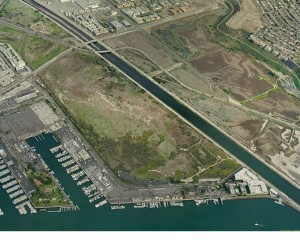 The prior post addressed soils, which is one of several important components for determining if wetlands are present. In the absence of a wetlands delineation (which can cost upwards of $30,000), we appraisers are left with having to determine wetlands and development potential ourselves – otherwise we risk a substantially erroneous value conclusion! As any Errors and Omissions insurance company will tell you, the number of lawsuit claims for vacant land exceeds any other property type by a wide margin.
The prior post addressed soils, which is one of several important components for determining if wetlands are present. In the absence of a wetlands delineation (which can cost upwards of $30,000), we appraisers are left with having to determine wetlands and development potential ourselves – otherwise we risk a substantially erroneous value conclusion! As any Errors and Omissions insurance company will tell you, the number of lawsuit claims for vacant land exceeds any other property type by a wide margin.
So what other clues do we have that wetlands might be present? We have direct evidence with hydrophytic vegetation and hydric soils as well as indirect evidence with the flood zone classification and the flooding history of the property. A hydrophytic plant “grows partly or wholly in water whether rooted in the mud, as a lotus, or floating without anchorage, as the water hyacinth.” (http://www.thefreedictionary.com/hydrophytic+plant).
The most common hydrophytic plants you will see are what is termed “common reed”, more formally known as Phragmites Australis or Phragmites for short, is a 6 to 15 foot invasive grass species (see a picture of it at https://www.fs.fed.us/database/feis/plants/graminoid/phraus/all.html). There can be other plants present too, but they are not as easy to detect as the open and notorious common reed. Hydrophytic plants occur in hydric soils, which are defined as “soil that formed under conditions of saturation, flooding, or ponding long enough during the growing season to develop anaerobic conditions in the upper part.”
Remember the soils discussion? Many of the descriptions of soils provided by the county Soil Survey will state whether this type of soil is typically hydric or not. Almost everything you’d want to know to determine if a soil is hydric is found here. Of course, appraisers aren’t qualified for digging up and analyzing soils, but if it describes a soil type as hydric in a Soil Survey, it’s hard to ignore.
The flood zone classification and the flooding history of a property can be clues that wetlands may be present. Remember… the site may have flooded who knows how many times in the past millennia so it’s not uncommon to have soils made up of layers of alluvial deposits. Again, this is indirect evidence but worth considering in conjunction with direct evidence like soil classification(s), hydrophytical vegetation and hydric soils.
At this point, we’ve developed a certain confidence level that wetlands may or may not be present. This leads us to the natural question, “how much wetlands are there?” That’s a question for the experts in the field – an environmental scientist. Appraisers should not render opinions in this area because we’re just not qualified. Fortunately, not all environmental scientists are expensive, so it may be a cost that can be passed on to the client. In Maryland, we’ve found Noreen Davis of Davis & Associates Environmental Consulting, Inc. in Chestertown to be highly professional and reasonably priced. ‘Just don’t book her so much that she has no time for us;)
Part 4 will address government regulations plus tidal and non-tidal wetlands. To be continued…

